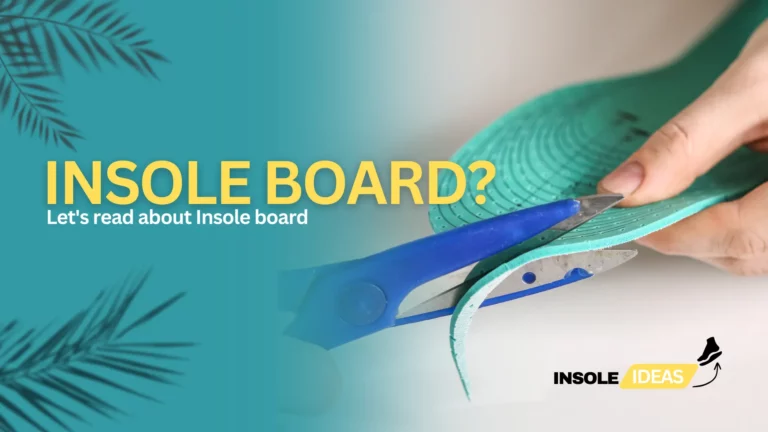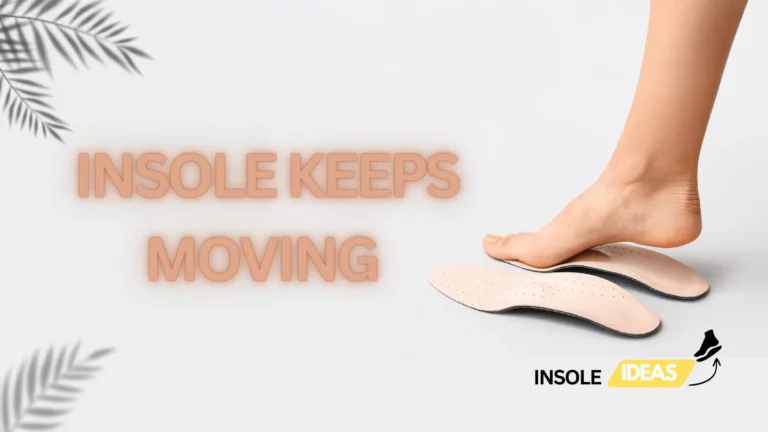Managing Flat Feet: The Role of Insoles and Alternative Treatments
Flat feet, also known as fallen arches, are a common condition where the arches of the feet collapse, causing the entire sole to come into contact with the ground. This can lead to problems such as foot pain, discomfort, and altered biomechanics. Understanding the implications of flat feet and exploring effective solutions is crucial for individuals dealing with this condition.
Insoles are often recommended as a non-invasive and cost-effective solution for addressing flat feet. These inserts are designed to provide support and stability to the arches, helping to distribute weight more evenly across the foot and alleviate pressure on specific areas.
Understanding Flat Feet
Definition of flat feet
Flat feet, or pes planus, is a condition characterized by the loss of the arch in the foot, resulting in the entire sole making contact with the ground. While some individuals may naturally have flat feet, others may develop the condition over time due to genetics, injury, or muscle weakness.
Causes and contributing factors of flat feet
Several factors can contribute to the development of flat feet, including:
Genetic predisposition: Flat feet can run in families, suggesting a genetic component.
Weak arch-supporting muscles: Muscular weakness or imbalance in the foot and ankle can lead to the collapse of the arches.
Injury or overuse: Trauma or repetitive stress to the feet can damage the supportive structures and contribute to flat feet.
Aging: As we age, the tendons and ligaments in the feet may weaken, leading to a loss of arch support.
Symptoms and effects of flat feet on mobility and posture
Flat feet can cause various symptoms and affect mobility and posture in different ways:
Foot pain: Individuals with flat feet may experience pain or discomfort in the arches, heels, or ankles, particularly after standing or walking for long periods.
Reduced shock absorption: The lack of arch support in flat feet can increase stress on the feet and lower limbs, resulting in fatigue and pain.
Altered biomechanics: Flat feet can affect the alignment of the lower body, leading to issues such as overpronation or excessive inward rolling of the feet during walking or running.
Understanding the definition, causes, and symptoms of flat feet is essential for recognizing the condition and seeking appropriate treatment options. In the following sections, we’ll explore how insoles can help address flat feet and improve overall foot health and function.
Role of Insoles in Supporting Flat Feet
Explanation of how insoles can provide arch support
Insoles are vital in supporting flat feet by providing additional arch support. Flat feet lack the typical arch structure, leading to overpronation and excessive inward rolling of the foot during walking or running. Insoles explicitly designed for flat feet are engineered with arch support features to help elevate and maintain the arch, reducing strain on the foot’s soft tissues and improving overall foot alignment. By supporting the arch, insoles help distribute weight more evenly across the foot and promote proper biomechanics, which can alleviate discomfort and prevent injuries associated with flat feet.
Benefits of using insoles for individuals with flat feet
Using insoles tailored for flat feet offers several benefits. Firstly, they provide cushioning and shock absorption, reducing the impact on the feet during weight-bearing activities. This cushioning helps alleviate pressure points and discomfort commonly experienced by individuals with flat feet. Additionally, insoles with arch support can help improve stability and balance, reducing the risk of ankle sprains and other injuries. Moreover, by promoting proper foot alignment, insoles can alleviate pain in the feet and the ankles, knees, hips, and lower back, which may be affected by the biomechanical abnormalities associated with flat feet.
Research and expert opinions on the effectiveness of insoles for flat feet
Numerous studies and expert opinions support the effectiveness of insoles in managing flat feet. Research has shown that using insoles with arch support can significantly reduce foot pain, improve foot function, and enhance the overall quality of life for individuals with flat feet. Podiatrists and orthopedic specialists often recommend insoles as a conservative treatment option for flat feet, particularly for mild to moderate cases. Insoles are considered a cost-effective and non-invasive intervention that can substantially relieve symptoms associated with flat feet. Overall, the consensus among experts is that using insoles tailored for flat feet can play a valuable role in supporting foot health and alleviating discomfort associated with this common condition.
Choosing the Right Insoles for Flat Feet
Features to look for in insoles designed for flat feet support
When selecting insoles for flat feet, several key features must be considered. Look for insoles with robust arch support to help lift and maintain the foot arch. Cushioning properties are also crucial for providing comfort and shock absorption. Additionally, consider insoles with a contoured design that conforms to the foot’s shape for optimal support and stability. Breathable materials can help prevent moisture buildup and keep the feet cool and dry.
Different types of insoles are available for flat feet.
Various types of insoles are available for flat feet, including prefabricated and custom-made options. Prefabricated insoles are ready-made and come in different sizes and arch heights to accommodate various foot shapes and sizes. On the other hand, custom-made insoles are specially crafted based on a mold or digital scan of the individual’s foot, ensuring a precise fit and tailored support. Both insoles can be effective for flat feet, but custom-made insoles may offer a more personalized solution for individuals with unique foot characteristics or specific biomechanical issues.
Considerations when selecting insoles based on foot type, activity level, and personal preferences
When choosing flat-foot insoles, consider your foot type, activity level, and personal preferences. Individuals with flat feet may benefit from insoles with higher arch support and more cushioning to compensate for the lack of natural arch support. Consider your daily activities and footwear preferences to ensure compatibility with your chosen insoles. Additionally, seek recommendations from healthcare professionals or try out different types of insoles to find the most suitable option for your needs.
Tips for Using Insoles to Support Flat Feet
Proper fitting and placement of insoles in shoes
Ensure that your insoles fit snugly inside your boots and provide adequate support to the arches of your feet. Position them correctly to prevent slipping or shifting during movement, which can cause discomfort and reduce effectiveness. Follow the manufacturer’s instructions for trimming or adjusting the insoles to achieve a proper fit.
Gradual adjustment to wearing insoles and managing discomfort
If you’re new to wearing insoles, wear them for short periods each day and gradually increase the duration as your feet adjust. It’s normal to experience some discomfort initially as your feet adapt to the new support provided by the insoles. However, consult a healthcare professional for guidance if you experience persistent pain or discomfort.
Maintenance tips to prolong the lifespan and effectiveness of insoles
Regularly clean your insoles with mild soap and water to remove dirt, sweat, and odor. Allow them to air dry completely before reinserting them into your shoes to prevent bacterial growth and odors. Inspect your insoles regularly for signs of wear and tear, such as fraying edges or compression in cushioning, and replace them to maintain optimal support and comfort. Following these tips, you can use insoles to support flat feet and improve your overall foot health and comfort.
Other Treatment Options for Flat Feet
Overview of alternative treatments for flat feet, such as physical therapy and orthotic devices
In addition to using insoles, several alternative treatment options are available for managing flat feet. Physical therapy can be beneficial for strengthening the muscles in the feet and lower limbs, improving flexibility, and correcting biomechanical imbalances that contribute to flat feet. Physical therapists may prescribe specific exercises and stretches to address muscle weakness and improve foot function. Orthotic devices, such as ankle braces or custom-made orthotic inserts, can also provide additional support and stability to the feet, helping to alleviate symptoms and prevent further complications associated with flat feet. Additionally, massage therapy, acupuncture, and chiropractic adjustments may relieve pain and discomfort associated with flat feet.
Importance of consulting with a healthcare professional for personalized treatment recommendations
It is essential to consult with a healthcare professional, such as a podiatrist or orthopedic specialist, for personalized treatment recommendations for flat feet. These healthcare providers can thoroughly evaluate your feet, assess your symptoms and medical history, and recommend appropriate treatment options tailored to your individual needs. They can also effectively guide insoles and integrate them with other treatment modalities for comprehensive flat feet support. A personalized treatment plan ensures you receive the most appropriate care and achieve the best possible outcomes for managing flat feet.
Potential benefits of combining insoles with other treatment modalities for comprehensive flat feet support
Combining insoles with other treatment modalities can offer synergistic benefits for comprehensive flat-foot support. For example, using insoles alongside physical therapy exercises can enhance the effectiveness of both interventions, providing targeted support and addressing underlying biomechanical issues simultaneously. Similarly, incorporating orthotic devices or alternative therapies into your treatment regimen can complement the benefits of insoles and help improve overall foot function and comfort. By combining multiple treatment modalities, individuals with flat feet can optimize their outcomes and achieve long-term relief from symptoms.
Conclusion
In conclusion, managing flat feet requires a comprehensive approach that may include insoles and other treatment modalities to alleviate symptoms and improve foot function. Insoles play a crucial role in providing support and stability to the feet, helping to alleviate pain and discomfort associated with flat feet. By consulting with a healthcare professional and exploring alternative treatment options, individuals with flat feet can develop a personalized treatment plan that addresses their unique needs and improves their overall foot health and quality of life. With the proper support and guidance, individuals with flat feet can find relief and continue to lead active and fulfilling lives.




